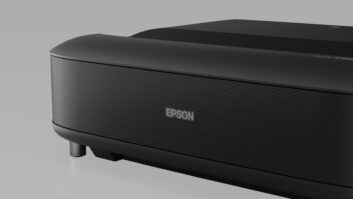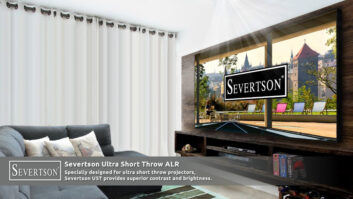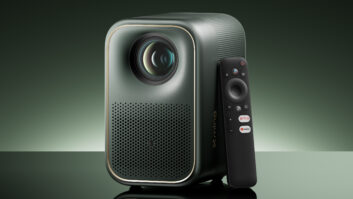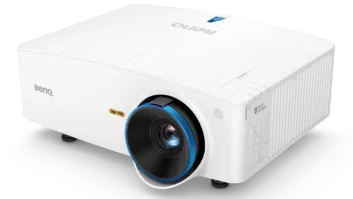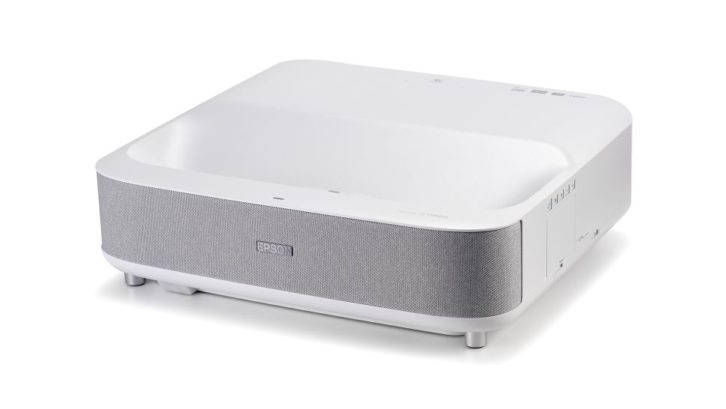
OUR VERDICT
This accessible UST projector punches above its weight with a bright, authentic image
-
- Bright picture
- Natural colors
- Onboard streaming
As a relatively nascent product category, high-quality ultra-short-throw (UST) projectors that can project images above 100 inches tend to be pretty pricey. These all-in-one home cinemas have to tick many boxes, delivering advanced optics, onboard streaming and integrated sound within a single compact package designed to be used flexibly.
So when it comes to models at the more affordable end of the market, such as the Epson LS300, we’re inherently skeptical about the prospect of it producing a well-rounded and immersive big-screen experience. Which makes it all the more satisfying to find that it does.
Price
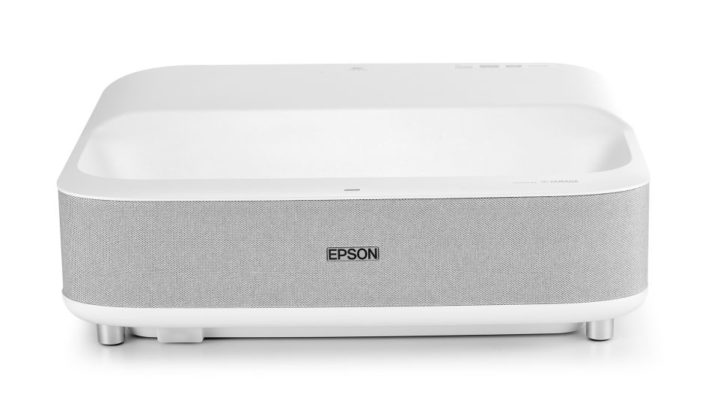
Originally launched at $4000, the LS300W is now down to $1750, making it one of the more affordable UST projectors currently on the market.
It sits below Epson’s only other UST projector, the LS500, which bumps up its spec with 4k resolution via pixel shifting and adds 3D support at a cost of $3299. The LS300 also undercuts non-native 4K models such as the Xgimi Aura $2499 and BenQ V6050 at around $5222. Meanwhile, it’s possible to step up to a native 4K model such as the Samsung LSP9T Premiere for $6499.
Build
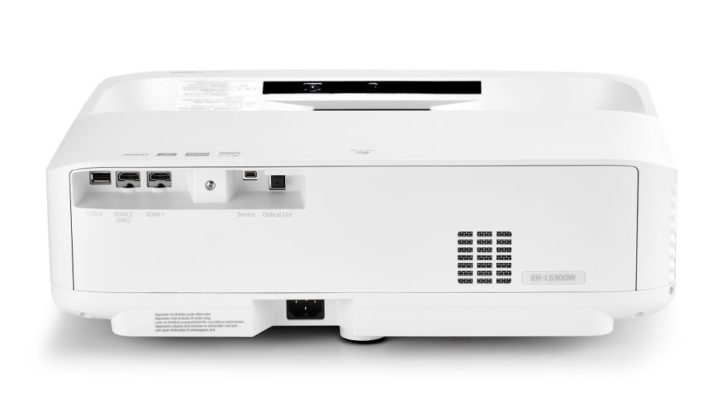
From the outset, the build of the Epson LS300 doesn’t indicate that it’s overly capable. Available in black (LS300B) or white (LS300W), with chunky curves and a gray marl grille, the look of the projector is relatively cheap and plastic, with a small, functional remote that looks like it was made for another product.
Underneath the fabric grille sits a serviceable 20W 2.1 Yamaha speaker system. Should you wish to connect an external sound set-up (and we think you should), there are two HDMI ports on the rear, one of which sports ARC, as well as an optical audio output. Alongside these sits a USB 2.0 input, but despite having wi-fi connectivity, there isn’t a socket for a hardwired ethernet connection. Though Netflix is notably absent, the Android 10 operating system gives access to most major streaming apps, and users can work around those that are missing by adding an external streaming device.
The right-hand side of the Epson LS300 houses push-buttons for power, screen blanking, Bluetooth and volume, as well as a recessed lever to manually adjust the focus, the action of which feels a bit lax. There’s also a removable air filter, and if the level of fan noise is anything to go by, this should be checked regularly.
Compact and light, the LS300 is easy to move around for positioning, with two adjustable feet underneath and a thorough placement guide provided by Epson. To further refine image placement, there’s an 8-point digital keystone adjustment. However, as with all projectors, we’d caution against using this unless absolutely necessary as it distorts the mapping of the pixel output, leading to a loss of detail – which, particularly as this model only has 1080p resolution, is something best avoided.
Features
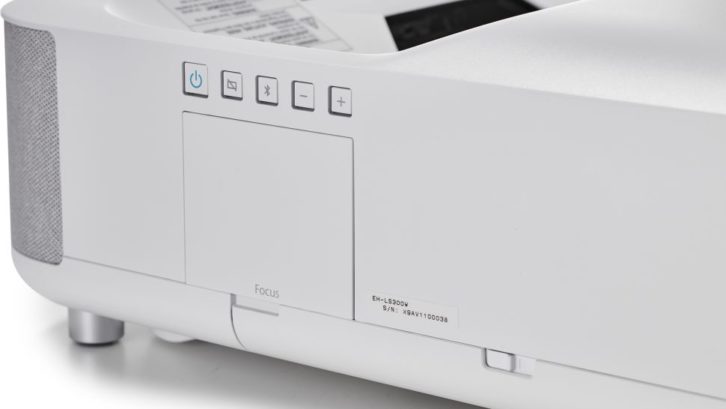
Although the LS300 delivers an HD output, its inputs support 4K content up to 4K@60Hz with SDR or 4K@30Hz with HDR10 and HLG. It will also accept Dolby Vision signals, though these are essentially treated as standard HDR.
The picture menu has a respectable range of calibration options with Dynamic, Natural, Cinema, Bright Cinema and Vivid color modes that can be used as starting points to refine the image further. Each source input, including internal streaming, maintains its independent picture settings, which, once you’ve got over any confusion as to why your calibration sliders keep changing, is a nice feature to have.
The LS300 produces an image using three 15.5mm LCD projector panels and a laser diode. Unlike DLP projectors such as the Xgimi Aura, which use a Digital Micromirror Device (DMD) made up of millions of microscopic mirrors that reflect each primary color through the projector’s lens, a 3LCD projector uses three transparent liquid crystal display panels, one for each primary color, to create its images, re-combining them before beaming the composite through the projector’s lens.
The LS300 is rated for a 20,000-hour lifespan, but users should bear in mind that because LCD panels are susceptible to varying levels of heat and light deterioration, over time they may experience a degree of color fading, and maintaining a good airflow (and clean filter) will help prologue the richness of the picture.
Picture and Sound
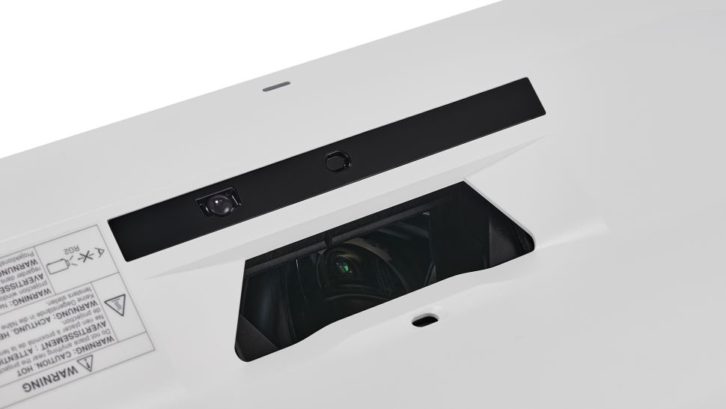
Watching Dune on our 8ft test screen, any reservations we have about vibrancy are quickly dispelled. The rust-hued landscapes of Arrakis with its deserts of spice reveal the projector’s surprisingly sophisticated tonal variation and depth. The dramatic landscape is vividly rendered, and the decent brightness levels (claimed to go up to 3600 lumens) produce an alluring picture. Compared to the Xgimi Aura, the colors are a touch less saturated, but they still feel punchy and natural rather than washed out. As expected, being 1080p, there is less fine detail in elements such as Timothee Chamelet’s stylishly windswept hair or the delicate, granular spice blowing in the wind. But the textures are still nicely tactile and well presented by the projector’s downscaling.
Sonically the LS300 tries its best to reproduce Mark Mangini’s stomach-churning sound design but can’t achieve anywhere near the scale necessary to make it a suitable match for such a dramatic picture, distorting when pushed to loud volumes. If you care enough about home cinema to want a big screen, we would encourage using an external soundbar or speaker system.
Switching to No Time To Die, the bright highlights of the evening sunlight on the hillside town of Matera are well defined, but the shadows of the buildings reveal the LS300’s weak black levels. However, this really isn’t a major issue (by projector standards) with most content, particularly when viewing without any ambient light in the room.
The motion processing of the LS300 is sufficiently smooth, with just a little juddering visible as Bond wheelies around the medieval cobbles on a motorbike. There are no motion settings at all in the menu, and at times the LS300 struggles – most noticeably with the action of the swinging church bells and chains, which lose definition, becoming blocky.
Verdict
It may not have the highest spec, but Epson’s LS300 brings convenient big-screen projection to a price point that is far less prohibitive than is usual for its class. It is less detailed and vibrant than its pricier 4K counterparts, but at this price it’s hard to quibble with what is an authentically rendered, bright, big picture and the onboard streaming smarts it comes with. Just be sure to also budget for a soundbar.
SCORES
Build: 3
Picture: 4
Sound: 4
This article originally appeared on whathifi.com.




